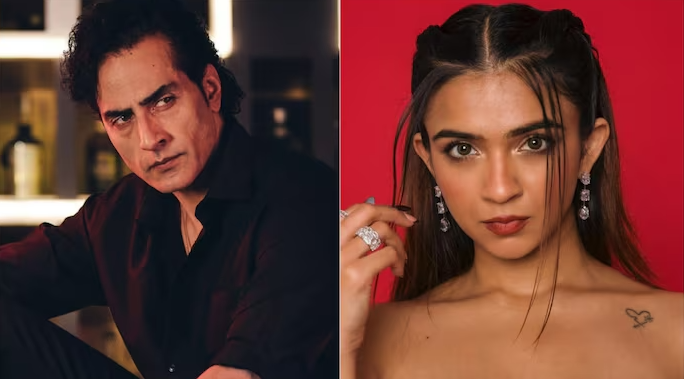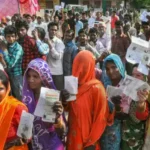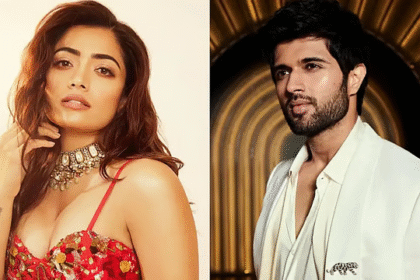Sudhanshu Pandey-Apoorva Mukhija Exchange: 6 Facts Breaking the Internet
Sudhanshu Pandey-Apoorva Mukhija exchange: 6 headline-making facts breaking the internet amid a heated OTT standoff.
Introduction to the Fallout Between Sudhanshu Pandey and Apoorva Mukhija
The Indian entertainment landscape witnessed a digital storm following a contentious exchange between veteran actor Sudhanshu Pandey and social media influencer Apoorva Mukhija, widely known as The Rebel Kid. The two were recently seen together on the OTT reality show ‘The Traitors’, a show that pits participants against one another in a high-stakes, deception-driven environment. What began as a televised disagreement has now spiraled into a public war of words, dominating headlines and igniting widespread discourse across digital platforms.
Sudhanshu Pandey, known for his long-standing career in Indian television and music, including his work in the boy band ‘The Band of Boys’, has now taken a direct but unnamed swipe at Mukhija in a public statement. The statement was released in response to what he alleges is her attempt to capitalize on their on-screen fallout to boost her online visibility and narrative clout.
In a pointed media interaction, Pandey referred to Mukhija as “a content creator who thrives on drama” and someone who is building relevance through “clickbait” tactics. Without naming her directly, he asserted that her conduct following the show, including interviews and social media commentary, reflects a desire to extend a moment of confrontation into sustained personal publicity.
The Statement That Sparked the Second Wave
Pandey’s remarks came after Mukhija allegedly made statements during an interview, claiming that Pandey often references her during his public appearances. In her comments to Money Control, Mukhija questioned his perceived reliance on her name for traction, saying, “Whose photo will he put in the thumbnail? Whose name will he write in his titles?” Her assertion alluded to the idea that the veteran actor was leveraging her identity for extended media visibility.
In response, Pandey emphasized his industry longevity, stating: “I have graced front pages and magazine covers long before thumbnails even existed.” He accused Mukhija of exploiting a fleeting moment from the show to generate content, adding that he finds it “amusing” how personalities whose popularity relies on online buzz try to turn brief interactions into controversies.
The statement didn’t end there. Pandey described Mukhija’s behavioral inconsistency as “juggling multiple masks,” highlighting a disconnect between her private apology and public commentary. He revealed that Mukhija had sent him a message after the show’s completion, apologizing for her conduct, which he accepted. However, he lamented her transformation before the camera, characterizing it as a return to “arrogance, attitude, and a whole new personality.”
The Legacy Perspective and Claims of Experience
Pandey, whose filmography and television appearances span over two decades, framed the episode within a broader narrative of professional endurance. “My career has outlived many people’s entire existence in this space,” he said, asserting that he has never required controversy to “validate” his public persona. His claim was not couched in boastful terms but in what he called “just facts.”
The actor dismissed the ongoing chatter as attempts to ride on his credibility. “If riding my name gives them some headline joy, they are welcome. Think of it as a gift from me!” he said.
Pandey also subtly criticized the newer generation of content creators, arguing that their credibility hinges not on craft or contribution but on visibility and virality. His implicit concern echoed that of many established actors who have often commented on the ephemeral nature of influencer-led fame versus sustained artistic engagement.
Context from ‘The Traitors’ and Allegations Involving Other Cast Members
Pandey’s statement also touched upon another element from ‘The Traitors’—Apoorva Mukhija’s alleged conduct toward veteran actor Ashish Vidyarthi. While he refrained from elaborating, the reference served as a warning about respect for hierarchy and experience within entertainment formats that often blur generational lines.
This wasn’t the first time ‘The Traitors’ had stirred public reactions. Known for its strategy-focused and high-conflict format, the show thrives on confrontation and dramatic turns. However, the transition of its content from episodic entertainment to real-world hostility raises questions about how personal boundaries are navigated in the age of OTT virality.
Social Media Response and Audience Polarization
The controversy quickly became a trending topic on X (formerly Twitter), Instagram, and YouTube, with fan bases on both sides engaging in vigorous defense of their preferred personalities. While some users supported Pandey’s seasoned voice, others criticized him for indirectly attacking a younger woman who represents the Gen-Z creator economy.
Mukhija’s fans praised her unapologetic tone and sharp commentary, seeing her as a disruptor challenging the industry’s seniority-based status quo. On the other hand, Pandey’s followers viewed his remarks as justified—an articulation of industry frustration with performative influencer culture.
Influencer culture experts noted that such episodes are inevitable in a digital media economy where the lines between personal branding, public relations, and performance are increasingly fluid.
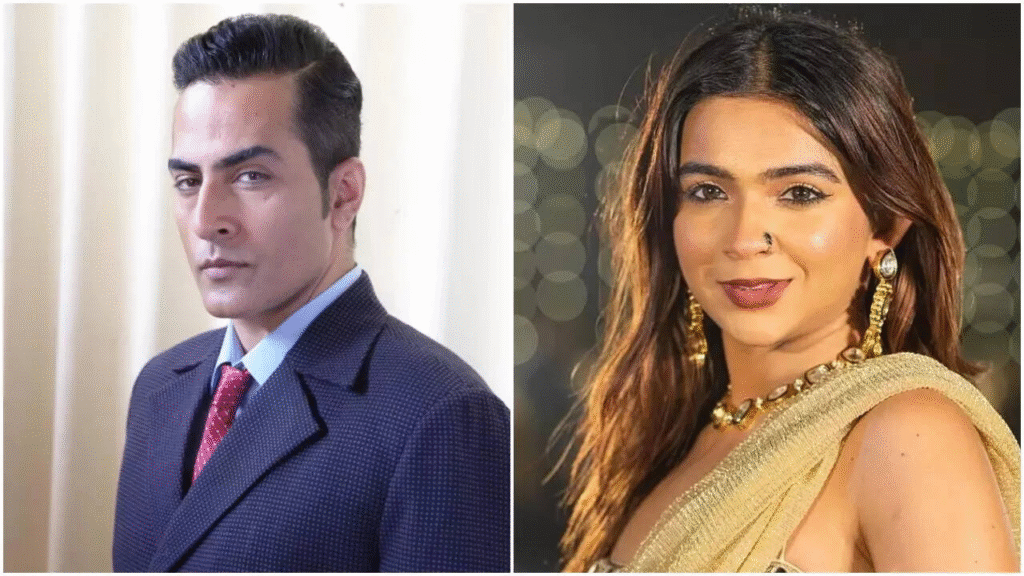
The Role of OTT Platforms in Fueling Real-Life Drama
With OTT platforms playing an increasingly central role in shaping public discourse, reality shows like ‘The Traitors’ provide fertile ground for both entertainment and conflict. The unscripted nature of these programs often blurs into real life, turning participants into household names—or in some cases, flashpoints for cultural debate.
Industry observers have long noted the phenomenon of post-show controversies becoming almost predictable marketing extensions. As platforms compete for viewership and engagement, any drama extending beyond the show becomes a commodity in its own right. In the Pandey-Mukhija case, that transition seems almost textbook.
Many critics have argued that this pattern is not coincidental, suggesting that producers and platforms benefit from prolonged viewer interest, even if it involves participants trading barbs long after cameras stop rolling. In this sense, Pandey’s accusations of clickbait content may reflect a broader systemic pattern within reality-driven OTT programming.
How the Media Framed the Narrative
The entertainment media’s role in shaping this public fallout cannot be overlooked. Headlines across major portals used strong, sometimes inflammatory language, with phrases like “delulu drama,” “controversy-fueled fame,” and “OTT clash intensifies.” While such headlines help attract eyeballs, they also contribute to a polarized reading of events.
Both parties have used these media channels strategically. Mukhija’s interviews leveraged widespread online platforms, while Pandey’s statements were disseminated through legacy outlets. This duality in communication modes mirrors the generational and professional divide between the two.
Media framing also extended into video thumbnails, YouTube commentary, and Instagram reels that often took sides, amplified quotes, or omitted context. This phenomenon reflects how modern-day celebrity disputes can be curated and weaponized by digital ecosystems hungry for virality.
Reactions from the Entertainment Industry
Within the industry, reactions have been mixed. Some colleagues privately sympathized with Pandey, citing the emotional toll of constant digital scrutiny. Others, particularly from the digital-first generation, argued that Mukhija was simply using her platform to reclaim her narrative.
Several actors, speaking anonymously, told industry publications that intergenerational dynamics within shows like ‘The Traitors’ can often be complex. What may appear as disrespect to some is viewed by others as assertiveness or self-branding. As such, the fallout between Pandey and Mukhija became a case study in how the entertainment industry grapples with evolving power structures.
Veteran actor Ashish Vidyarthi, though mentioned by Pandey in his statement, refrained from making public remarks, maintaining a dignified silence that was widely interpreted as an effort to de-escalate the situation.
Legal Implications and Contractual Nuances
While no legal notices or defamation suits have been publicly filed, the possibility of legal escalation remains. In the entertainment industry, non-disparagement clauses are increasingly common in reality show contracts, especially for shows on top-tier OTT platforms. If either party is found to be violating these clauses, repercussions could include financial penalties or reputational damage.
Entertainment lawyers contacted for comment noted that while criticism and commentary fall within free speech protections, directly monetizing such conflicts via sponsored interviews or content could be grounds for legal review, especially if defamatory content is involved.
For now, both Pandey and Mukhija appear to be navigating the fallout through media engagements rather than legal channels, although that could change if the dispute continues to escalate.
Conclusion of Chapter One – But Not the Story
As of now, the Sudhanshu Pandey vs Apoorva Mukhija drama appears far from resolved. While both have presented their versions with clarity and candor, the underlying tensions highlight larger issues: generational divides, the power of narrative control, and the blurred lines between performance and persona in the digital age.
Whether the two will reconcile, or if this dispute will be remembered as a pivotal moment in OTT controversy history, remains to be seen. One thing is certain—the audience is watching, and the script is still unfolding.
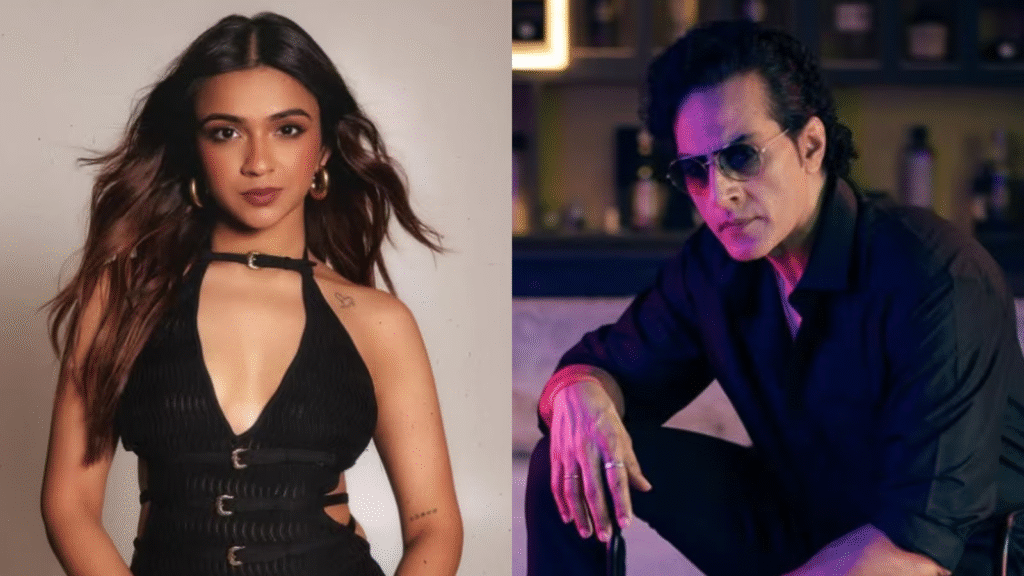
Public Sentiment and Psychological Dimensions
As the controversy deepens, public sentiment across social media has been split. Beyond entertainment, viewers have begun psychoanalyzing the personalities involved. Discussions have emerged about narcissistic traits, emotional resilience, and performative outrage—common elements in influencer culture and entertainment alike.
Sudhanshu Pandey, with his seasoned approach, has been hailed by some as dignified and resilient. In contrast, Apoorva Mukhija is often viewed as emblematic of Gen Z’s unapologetic boldness. Both personas have their cheerleaders—and their detractors. The discourse reflects broader generational divides in communication, emotional expression, and conflict resolution.
The Digital Economy of Outrage
Modern entertainment thrives not just on talent but on digital relevance. Outrage and spectacle, especially on OTT platforms, are not collateral damage—they are often the product. Analysts suggest the Sudhanshu-Apoorva fallout is part of the attention economy where virality is currency.
Controversies are packaged into reels, clickbait headlines, thumbnails, and reaction videos. This kind of content thrives on platforms like YouTube, X, and Instagram, where algorithms reward engagement over nuance. The current dispute, then, becomes a monetized moment for hundreds of creators outside the two principal figures.
Image Management in the OTT Era
Crisis management today goes beyond a PR agency—it requires agility across platforms. Sudhanshu Pandey appears to be using legacy media and formal statements to shape his image, while Mukhija taps into short-form video and influencer-centric outlets.
For actors from traditional backgrounds, this digital firefighting is new terrain. For influencers like Apoorva, it’s business as usual. Their tools, strategies, and lexicons differ—but they share one goal: narrative control.
Gender Dynamics in Digital Conflicts
This controversy also intersects with gender narratives. Mukhija, a young woman in a male-dominated entertainment culture, has faced both support and misogynistic attacks. Her assertiveness is read as arrogance by some and empowerment by others.
Pandey’s criticism, despite being indirect, has invited analysis about how senior men respond to outspoken women in public spaces. The debate has spiraled into discussions on digital patriarchy, gendered trolling, and double standards in fame.
Brand Collaborations and Professional Impact
Brand partnerships for both parties are under scrutiny. Mukhija, who collaborates with youth-centric fashion and tech brands, is facing questions about whether her outspoken posture will impact corporate associations. Similarly, Pandey’s dignified tone may earn him favor with family brands or legacy productions.
In OTT ecosystems, how one handles conflict often defines long-term marketability. Brands want association with drama only when it elevates visibility without reputational risk.
Content Dissection on Reaction Channels
The incident has become fodder for reaction channels and commentary YouTubers. These creators dissect every post, statement, and tone shift, generating monetized content by playing mediator, judge, or critic. Terms like “delulu drama” and “mask off” have become popularized through this layer of content.
This new layer of third-party content—often more influential than mainstream news—shows how entertainment is consumed, mutated, and repurposed by digital society.
Viewer Expectations from Reality Celebrities
Audiences today expect reality TV participants to live their conflicts online. This voyeurism is a direct outcome of formats like ‘Bigg Boss’, ‘Lock Upp’, and ‘The Traitors’ where real emotions become saleable drama. But such expectations can also damage real relationships, mental health, and professional standing.
The ongoing conflict blurs the line between showbiz and personal identity, asking tough questions: Where does the character end, and the real person begin?
Comparing with Past OTT Controversies
The Sudhanshu-Apoorva feud is not unique. From Kangana Ranaut vs Karan Johar to Elvish Yadav’s controversies, Indian OTT space has repeatedly produced high-octane conflicts that outlive the shows they originated in. These patterns are not anomalies—they are systemic trends fueled by algorithmic engagement logic.
What sets this incident apart is the intergenerational conflict—TV vs influencer, legacy vs novelty, experience vs audacity.

Impact on ‘The Traitors’ Brand and Future Seasons
For producers of ‘The Traitors’, this controversy is a double-edged sword. On one hand, the buzz fuels interest and potential viewership for future seasons. On the other, it risks reducing the show’s brand to chaos and character assassination.
There’s growing conversation in entertainment circles about introducing post-show counseling or NDAs that limit public fallouts, especially when mental well-being and reputational damage are at stake.
Sociocultural Reflection and Closing Chapter Two
This episode has become a mirror to India’s evolving celebrity culture. It shows how fame today is fluid—how actors become influencers and vice versa. It reflects a public that craves spectacle, even as it moralizes over it.
As the Sudhanshu-Apoorva drama enters its next phase, one thing is clear: the battle is no longer just about a disagreement on ‘The Traitors.’ It’s about two worlds—legacy media and influencer culture—colliding in full public view.
The Economic Incentives Behind Online Drama
Monetizing outrage is a well-documented phenomenon in the influencer economy. Apoorva Mukhija, with her large social media following, could potentially benefit from increased brand deals, video views, and algorithm boosts through heightened visibility. Sudhanshu Pandey’s name being linked to her could inadvertently improve her discoverability in online searches, YouTube thumbnails, and trending hashtags.
On the flip side, Pandey’s statements could also reinforce his brand as a dignified, legacy artist resisting the perceived erosion of professional standards. For veteran actors, such moments can generate renewed media interest, perhaps even triggering retrospective appreciation of their work.
From an economic perspective, both sides are indirectly profiting from the digital noise—a modern paradox where controversy becomes currency.
Generational Tensions in Indian Media
This public fallout underscores the generational rift in India’s entertainment landscape. Sudhanshu Pandey represents the era of rigorous auditions, serial dramas, and slow-earned fame. Apoorva Mukhija, by contrast, embodies the self-made influencer era where personal branding, virality, and content quantity often eclipse traditional credibility.
The friction lies not just in their individual disagreement but in what they symbolize. Older actors often view influencer fame as shallow and transient; younger creators often view legacy actors as gatekeepers or out-of-touch.
This intergenerational tension is not unique to India—it mirrors Hollywood’s ongoing debates between TikTok stars and veteran actors—but in India, where respect for hierarchy is deeply ingrained, the clash feels more emotionally loaded.
The Language of Public Disputes
One of the key aspects that caught the public’s attention was the language used. Phrases like “delulu drama,” “juggling masks,” and “clickbait culture” have become anchors in the discourse. Mukhija’s Gen-Z vocabulary clashes sharply with Pandey’s old-school tone—formal, eloquent, and rooted in respectability politics.
This language divide creates its own commentary. Audiences not only pick sides based on statements but on how those statements are constructed. The generational lexicon becomes a cultural identifier, helping each audience group identify “one of their own.”
Reaction from Feminist and Cultural Critics
Feminist commentators have weighed in on the controversy, noting that young outspoken women are often disproportionately criticized for behavior that would be overlooked or even admired in men. Mukhija’s sarcasm and assertiveness are being critiqued as arrogance, while Pandey’s indirect jabs are being seen by some as mature restraint.
However, others argue that Mukhija’s media tactics do border on opportunism. The conversation has thus become a nuanced one—touching upon how women navigate criticism, credibility, and control in an industry still riddled with patriarchy.
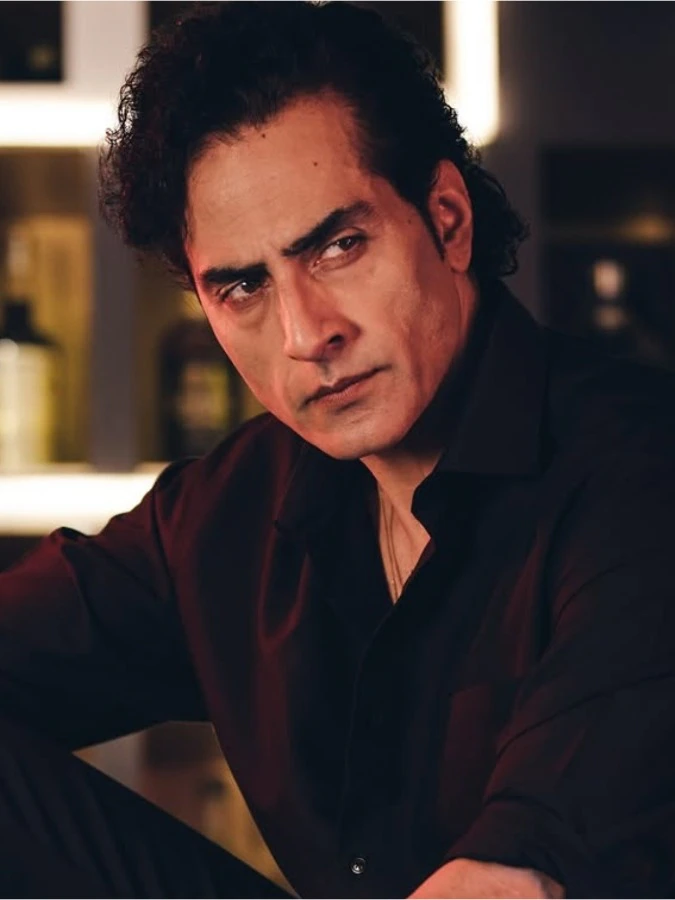
What the Audience Really Wants
Interestingly, despite the escalating rhetoric, a significant section of the audience appears fatigued. On Reddit and niche entertainment forums, users have started threads questioning why every reality show ends in online battles. There’s a growing call for shows to add mental health support, post-show reconciliation episodes, or structured dispute resolution frameworks.
This reflects a maturing audience—one that may enjoy drama but increasingly questions its real-life cost.
Producer Responsibility and Ethical Boundaries
Producers of OTT content like ‘The Traitors’ are now being scrutinized for how much they allow post-show conflicts to fester. Should there be clear boundaries? Should participants be warned about the long-term fallout? Is the lack of aftercare a systemic problem?
Some platforms like Netflix have started offering post-show “Reunion” episodes to give participants a final word in a neutral space. Indian platforms may soon have to adopt similar strategies to protect cast members and limit social media bloodbaths.
Social Media as a Weapon and a Shield
Both Pandey and Mukhija have used social media selectively—to release statements, clarify intentions, and maintain public pressure. The ability to control one’s story via direct-to-audience channels is both a gift and a hazard.
Mukhija’s strategy involves virality, visuals, and relatability. Pandey’s approach banks on traditional respect and long-format interviews. Each method reflects different strengths—but both wield platforms as digital shields and, when necessary, weapons.
Public Fatigue vs Public Fascination
While a portion of the digital population calls for “moving on,” algorithms thrive on prolonged drama. Each new post, statement, or interview reignites interest, dragging in newer audiences. YouTube videos, Instagram reels, Twitter polls—all feed off engagement.
The longer the controversy lasts, the more it enters pop culture. Already, meme pages have latched onto soundbites, parody accounts have mimicked the exchange, and satire pages have done deep-dive summaries. In the process, a serious industry conversation becomes infotainment.
Long-Term Impact on Careers
For Sudhanshu Pandey, the impact may be minimal. His reputation as a respected actor and musician is largely intact, and some producers may even admire his candidness. However, for Mukhija, who is still building a mainstream crossover, this controversy could define her for the near future—for better or worse.
Depending on how she navigates the coming weeks, she could either become a face of bold new-age creators or risk being typecast as a controversy magnet. Much depends on her next move: whether she escalates, clarifies, or withdraws.
The Shifting Definitions of Fame
Ultimately, this dispute illustrates how fame is no longer a fixed construct. In the OTT era, actors and influencers inhabit overlapping but distinct universes. Reality TV has blurred the lines between art, drama, and personal lives—making conflict not just inevitable but almost essential.
Both Pandey and Mukhija are players in this evolving game. And whether they intended to or not, their story has become a case study on how power, perception, and platform intersect in the post-digital entertainment age.
Also Read : July 9 Rainfall Shuts Down Delhi: 141 mm of Rain Floods City, Triggers Major Commute Disruptions


